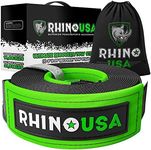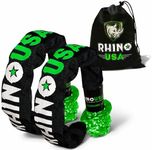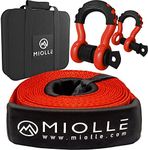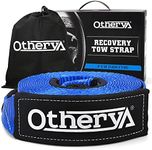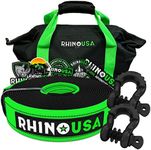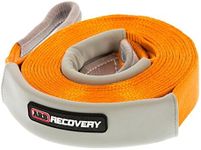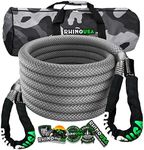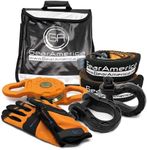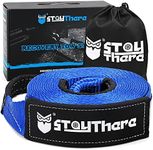Buying Guide for the Best Tow Straps
Choosing the right tow strap is important for safety and effectiveness when you need to pull or recover a vehicle. Tow straps come in different sizes, materials, and strengths, and picking the right one depends on what kind of vehicles you plan to tow and the situations you might face. Understanding the key specifications will help you make a smart choice that matches your needs and keeps you prepared for emergencies or off-road adventures.MaterialTow straps are usually made from either polyester or nylon. The material affects the strap’s strength, stretch, and durability. Nylon straps have some stretch, which helps absorb the shock when pulling a stuck vehicle, making them good for recovery situations. Polyester straps have less stretch and are better for steady towing on roads. Think about whether you’ll be using the strap for recovery (nylon) or regular towing (polyester) to decide which material is best for you.
LengthThe length of a tow strap determines how much distance you can keep between the two vehicles. Shorter straps (around 10-15 feet) are easier to manage and work well in tight spaces, but they offer less flexibility. Longer straps (20-30 feet or more) give you more room to maneuver, which is helpful in off-road or recovery situations, but they can be harder to handle and store. Choose a length based on where you expect to use the strap most often—shorter for city or roadside use, longer for off-road or more challenging recoveries.
WidthThe width of a tow strap is related to its strength. Wider straps can generally handle more weight and stress. Common widths range from 2 to 4 inches. For smaller cars, a 2-inch strap is usually enough, while larger vehicles like trucks or SUVs may need a 3- or 4-inch strap. Match the width to the size and weight of the vehicles you plan to tow to ensure safety and reliability.
Load Capacity (Breaking Strength)Load capacity, often called breaking strength, tells you how much weight the strap can safely handle before it might break. This is usually listed in pounds or tons. It’s important to pick a strap with a breaking strength at least three times the weight of the heaviest vehicle you plan to tow or recover. This safety margin helps prevent accidents and equipment failure. Always check your vehicle’s weight and choose a strap with a suitable load capacity.
End FittingsTow straps can have different types of end fittings, such as hooks, loops, or shackles. Hooks are easy to attach but can slip off if not secured properly. Loops are more secure but require a bit more effort to attach, often needing a shackle. Shackles provide a strong, secure connection but add extra hardware. Consider what your vehicle’s tow points can accommodate and choose end fittings that are compatible and easy for you to use safely.
Visibility FeaturesSome tow straps come in bright colors or have reflective strips to make them easier to see, especially in low light or bad weather. High-visibility straps help prevent accidents by making the strap noticeable to other drivers and to the people using it. If you expect to use your tow strap at night or in busy areas, look for one with good visibility features.
